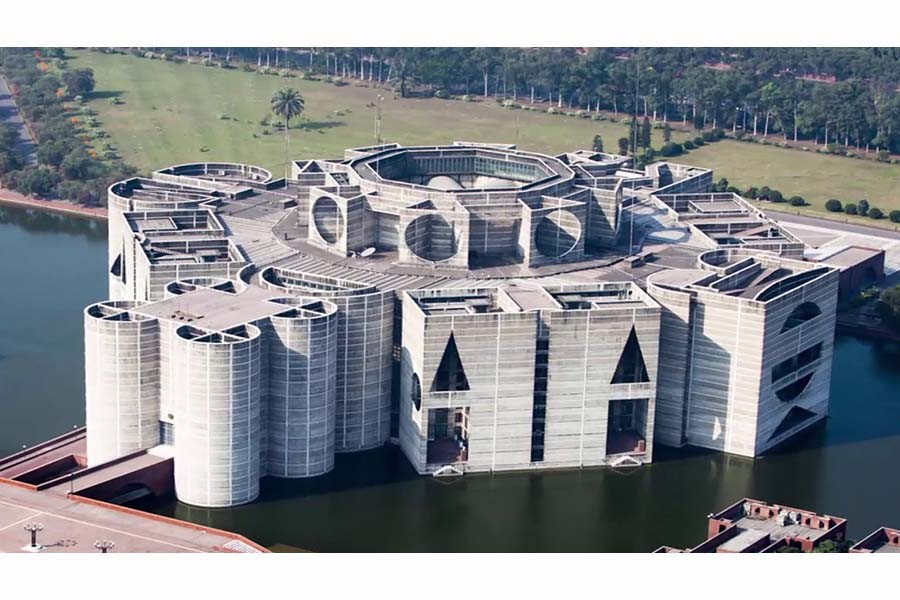A signboard on the south-western side of the Jatyio Sangsad (JS) precinct reads like this: "Playground suitable only for the physically challenged children". To say this is anachronistic is more than an understatement. It could be the joke of the decades since the country has become independent. If the signboard is any guide, the location of the playground ought to be the unattended meadow full of weeds and creepers sandwiched between the graveyards to the south-west corner and the filling station opposite to Asad Gate.
It was not known that a place which is neither a piece of woodland nor a pasture but a mixture of the two and left unattended can be a suitable playground for the physically challenged. The signboard-cum-notice board has been hoisted there for years but there is no gate nor any kind of entrance. Herbs and shrubs are aplenty and just a handful of small trees announce their presence as well. Once there was no area boundary at all but the place was inaccessible because of bushes. Reptiles including snakes could easily have a perfect sanctuary there. It is still possible that some of those creatures live there mostly undisturbed.
Now iron railing has been marking the boundary not only of this part of the sprawling JS ground but all the sides except the northern backside where water separates the main buildings and other quarters. It is the security concern that has prompted the authorities to do this. Then again, the same concern has led to the closure of the filling station that could be used as an unprotected corridor by saboteurs.
In a high-security zone like this, the signboard announcing that here is a playground for the disabled stands as a mockery in the same way the grave yard does the sanctity of the nation's parliament. Louis Kahn did not visualise in his wildest imagination accommodation of many of the structures uncultured people have built all around later on. The grave and the nebulous playground for the physically challenged children are facilities least of all to figure in.
The architecture of the JS building is unique and it has been severely compromised by the buildings built primarily for an aborted Non-Aligned Movement (NAM) conference. Although the conference was not held, the quarters were built and are now used for residential facilities of the members of parliament (MPs). Not all allottees however stay there. Reportedly, some of those are occupied by party supporters or relations. The marvellous architecture has been spoiled by a few other permanent or temporary structures. Imagine any such addition to the surrounding of the Avenue des Chams-Elysees in Paris to obstruct view!
The filling station there has been closed but not dismantled. Why? The parliament house could not be completed according to the architect's plan. There can be no place for the filling station, a playground for the physically challenged and the grave yard if the aesthetic composition of the main structure and the surrounding areas is taken into consideration. Gone is the four-lane tree-covered boulevard with an equally pleasant row of nut and krishnachura trees adorning the island in between. The majestic structure could rival many of its counterparts the world over but for the indiscretion of people who are architecturally illiterate.
By the way, can the original plan of the JS be revived now that a copy of the plan has been brought to the country?


